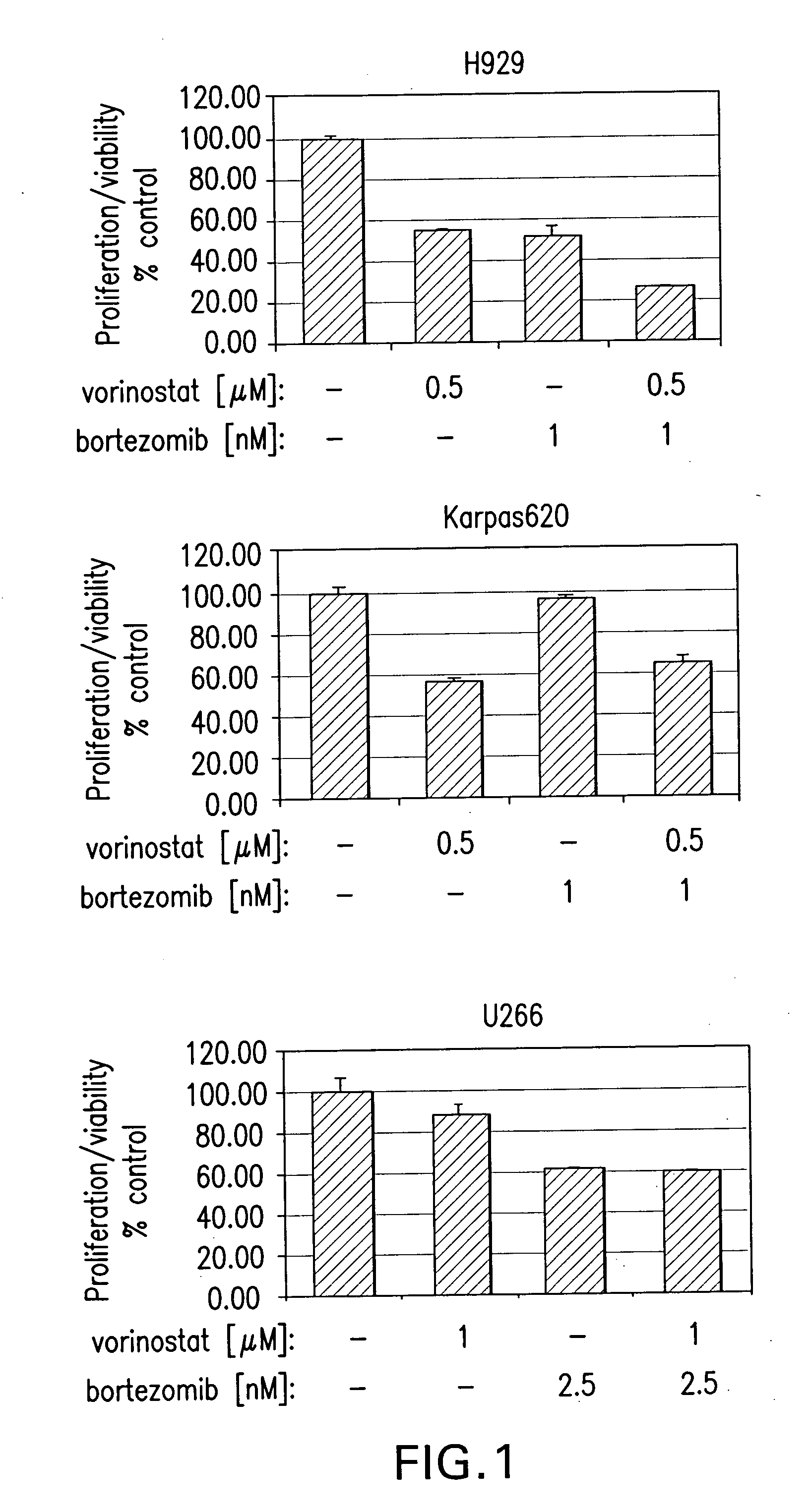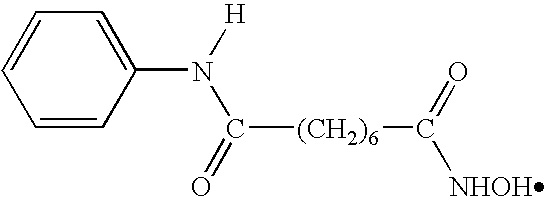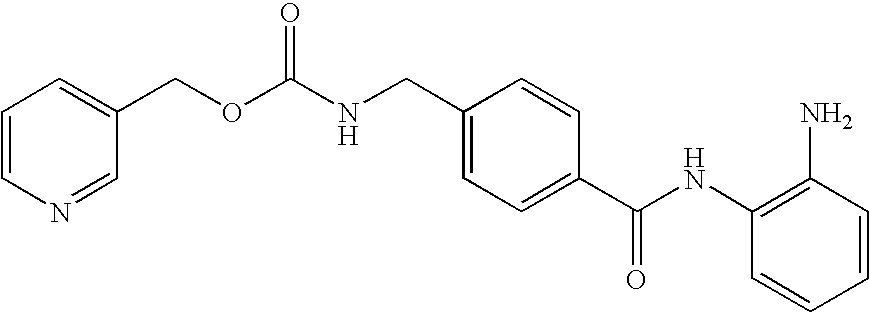Methods of using saha and bortezomib for treating cancer
a cancer and saha technology, applied in the field of cancer treatment, can solve the problems of morbidity and eventual mortality, and achieve the effect of reducing mortality and reducing side effects
- Summary
- Abstract
- Description
- Claims
- Application Information
AI Technical Summary
Benefits of technology
Problems solved by technology
Method used
Image
Examples
example 1
Synthesis of SAHA
[0257]SAHA can be synthesized according to the method outlined below, or according to the method set forth in U.S. Pat. No. 5,369,108, the contents of which are incorporated by reference in their entirety, or according to any other method.
[0258]In a 22 L flask was placed 3,500 g (20.09 moles) of suberic acid, and the acid melted with heat. The temperature was raised to 175° C., and then 2,040 g (21.92 moles) of aniline was added. The temperature was raised to 190° C. and held at that temperature for 20 minutes. The melt was poured into a Nalgene tank that contained 4,017 g of potassium hydroxide dissolved in 50 L of water. The mixture was stirred for 20 minutes following the addition of the melt. The reaction was repeated at the same scale, and the second melt was poured into the same solution of potassium hydroxide. After the mixture was thoroughly stirred, the stirrer was turned off, and the mixture was allowed to settle.
Synthesis of SAHA
Step 1—Synthesis of Subera...
example 2
Generation of Wet-Milled Small Particles in 1:1 Ethanol / Water
[0271]The SAHA Polymorph I crystals were suspended in 1:1 (by volume) EtOH / water solvent mixture at a slurry concentration ranging from 50 mg / gram to 150 mg / gram (crystal / solvent mixture). The slurry was wet milled with IKA-Works Rotor-Stator high shear homogenizer model T50 with superfine blades at 20-30 m / s, until the mean particle size of SAHA was less than 50 μm and 95% less than 100 μm, while maintaining the temperature at room temperature. The wet-milled slurry was filtered and washed with the 1:1 EtOH / water solvent mixture at room temperature. The wet cake was then dried at 40° C. The final mean particle size of the wet-milled material was less than 50 μm as measured by the Microtrac method below.
[0272]Particle size was analyzed using an SRA-150 laser diffraction particle size analyzer, manufactured by Microtrac Inc. The analyzer was equipped with an ASVR (Automatic Small Volume Recirculator). 0.25 wt % lecithin in ...
example 2a
Large Scale Generation of Wet-Milled Small Particles in 1:1 Ethanol / Water
[0273]56.4 kg SAHA Polymorph I crystals were charged to 610 kg (10.8 kg solvent per kg SAHA) of a 50% vol / vol solution of 200 proof punctilious ethanol and water (50 / 50 EtOH / Water) at 20-25° C. The slurry (˜700 L) was recirculated through an IKA Works wet-mill set with super-fine generators until reaching a steady-state particle size distribution. The conditions were: DR3-6, 23 m / s rotor tip speed, 30-35 Lpm, 3 gen, ˜96 turnovers (a turnover is one batch volume passed through one gen), ˜12 hrs.
Approx.MillTime(hr)=96×BatchVolume(L)NaturalDraftofMill(Lpm)×#ofGenerators×60
[0274]The wet cake was filtered, washed 2× with water (total 6 kg / kg, ˜340 kg) and vacuum dried at 40-45° C. The dry cake was then sieved (595 μm screen) and packed as Fine API.
PUM
| Property | Measurement | Unit |
|---|---|---|
| total volume | aaaaa | aaaaa |
| enantiomeric excess | aaaaa | aaaaa |
| enantiomeric excess | aaaaa | aaaaa |
Abstract
Description
Claims
Application Information
 Login to View More
Login to View More - R&D
- Intellectual Property
- Life Sciences
- Materials
- Tech Scout
- Unparalleled Data Quality
- Higher Quality Content
- 60% Fewer Hallucinations
Browse by: Latest US Patents, China's latest patents, Technical Efficacy Thesaurus, Application Domain, Technology Topic, Popular Technical Reports.
© 2025 PatSnap. All rights reserved.Legal|Privacy policy|Modern Slavery Act Transparency Statement|Sitemap|About US| Contact US: help@patsnap.com



